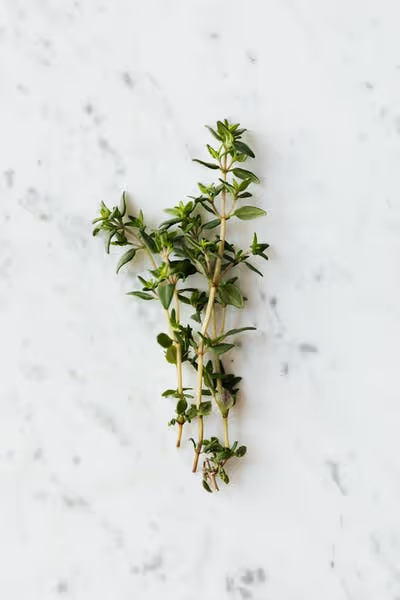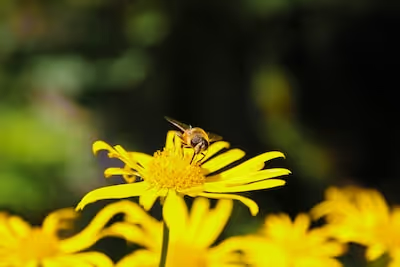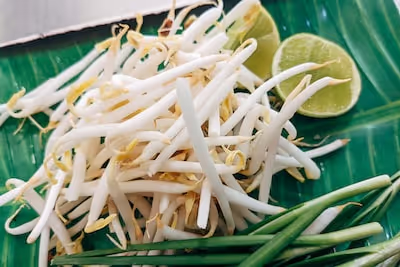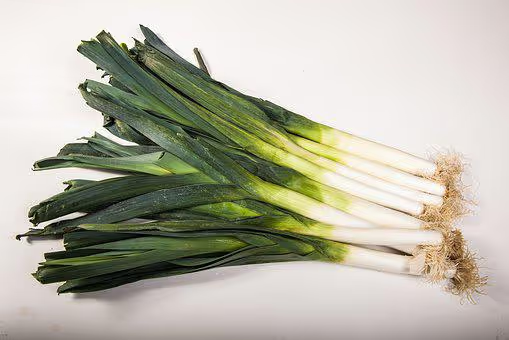Growing Cayenne Pepper: A Guide to Fiery, Flavorful Harvests
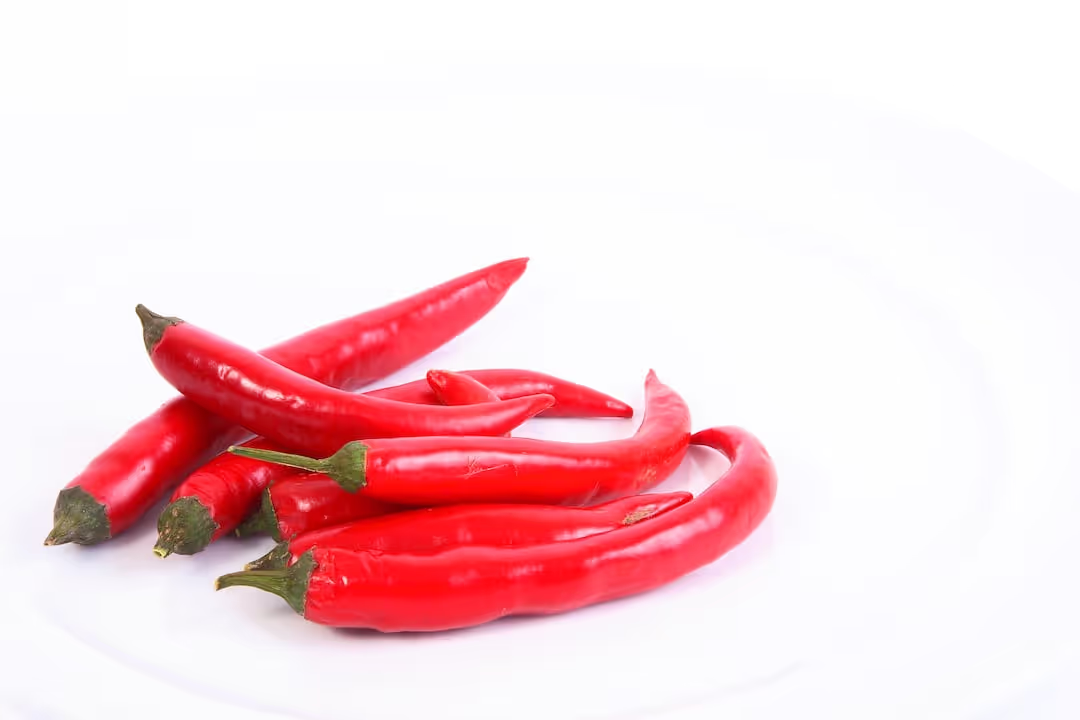
Growing Cayenne Pepper
Growing cayenne pepper fires up your garden and kitchen with intense flavor and vibrant color. Start cayenne seeds indoors 8 weeks before your last frost, then transplant to a sunny, warm garden bed for fiery harvests within 70-80 days. Growing cayenne pepper rewards you with a prolific crop perfect for spicy sauces, lively salsas, and pepper flakes—keep reading to turn up the heat.
Cheatsheet: Cayenne Pepper Growing Made Easy
🌱 Seed Starting
- Sow indoors 8–10 weeks before last frost (60–70°F / 16–21°C).
- Germinate: Use heat mat for 75–85°F (24–29°C).
- Move seedlings to bright light after emergence.
☀️ Transplanting & Site Prep
- Transplant after soil stays above 60°F (16°C); night temps above 55°F (13°C).
- Full sun: 6+ hours/day.
- Soil: Well-draining, rich, pH 6.2–7.0.
- Space plants 18–24 in (45–60 cm) apart.
💧 Water & Feeding
- Keep soil evenly moist, not soggy.
- Mulch to retain moisture, reduce weeds.
- Feed: Side-dress compost or use balanced fertilizer monthly.
🌶️ Care & Support
- Stake plants if tall or heavy with fruit.
- Pinch early flowers for bushier growth.
- Watch for aphids, spider mites—blast with water or use insecticidal soap.
🕒 Harvest & Use
- Ready in 70–100 days. Harvest when red, glossy, firm.
- Yield: 30–50 peppers per plant.
- Dry, freeze, or use fresh. Packs 30,000–50,000 Scoville units!
🛠️ Tools and Products You'll Need
- Seed trays & heat mat
- High-quality potting mix
- Compost or organic fertilizer
- Trowel, stakes, garden gloves
- Mulch
- Sharp scissors for harvest
🥗 Nutrition & Wellness
Rich in vitamin C, A, capsaicin; supports metabolism, immunity, and self-sufficiency.
-
Growing Cayenne Pepper: A Guide to Fiery, Flavorful Harvests
I grow Growing Cayenne Pepper plants for their clean heat and bright fruit that dries beautifully. They reward patience and precision, then suddenly flood the kitchen with red knives of flavor.
Start with the right cayenne cultivar
I choose seed by heat, plant size, and drying quality. Cayenne usually runs 30,000 to 50,000 Scoville Heat Units, hot enough to wake a stew without numbing the tongue.
- Cayenne Long Slim: classic 5 to 6 in pods, steady producer, quick to dry.
- Cayenne Ring of Fire: compact, early, fierce heat and reliable set in cooler nights.
- Joe’s Long: gangly pods up to 10 to 12 in, great for ristras, needs staking.
- Arapaho and Red Ember: tidy habits for containers, heavy flushes.
For containers I favor dwarf or compact lines, which color faster and waste less nitrogen on excess foliage. For field beds I run Long Slim or Joe’s Long on a low trellis for air and easy picking.
Climate, site, and soil dial-in
Peppers crave warmth across the whole day-night cycle. I transplant only when soil holds 65 to 70 F, 18 to 21 C, and nights stay above 55 F, 13 C.
They prefer slightly acidic soil. Aim for pH 6.0 to 6.8 and high organic matter for steady moisture and calcium flow.
Full sun grows sugars and heat. In hot interiors or coastal deserts, I run 30 percent shade cloth during the fiercest afternoon to protect pollen.
“Fruit set declines when daytime temperatures exceed 90 F, 32 C, or nights drop below 55 F, 13 C.” — Texas A&M AgriLife Extension
Seed starting that actually sticks
I sow 8 to 10 weeks before last frost in a fine, sterile mix. Seeds pop fastest at 80 to 85 F, 27 to 29 C, then I drop to 70 to 75 F, 21 to 24 C under bright light.
Give seedlings 14 to 16 hours of strong light, roughly 300 to 500 PPFD, and brush the tops with a hand or a fan to thicken stems. I up-pot to 3 to 4 in, 7.5 to 10 cm, cells when roots circle.
Hardening off is non-negotiable. I give 7 days of gradual outdoor exposure, then transplant after a calm morning watering.
Transplanting without shock
I space 16 to 18 in, 40 to 45 cm, in rows 24 to 30 in, 60 to 75 cm, apart. Set plants at the same depth, then mulch lightly once the soil warms.
Black film or woven fabric bumps soil heat and keeps early weeds down. I stake with a single bamboo or a low Florida weave because loaded cayennes topple in a gust.
Fertility that fuels fruit, not leaves
Too much nitrogen builds a jungle and starves fruit set. I mix a balanced pre-plant feed, about 3-5-4 NPK, then side-dress potassium and calcium once pods set.
In containers, I use a 5 to 10 gallon, 19 to 38 L, pot with a slow-release base and a weekly low-salt liquid at EC 1.2 to 1.6. Consistent moisture prevents blossom-end rot caused by disrupted calcium uptake.
Water like you mean it
Deep, infrequent watering grows roots that hunt, not roots that whine. I water when the top 1 in, 2.5 cm, dries, then soak the root zone thoroughly.
Morning irrigation keeps leaves dry by nightfall. I avoid splashing soil onto foliage to cut bacterial spread.
Training, pruning, and flower management
I pinch the very first flower to push canopy before fruit load. After that I let the plant choose, and only thin congested interior shoots for airflow.
Stems with heavy clusters get a soft tie. It looks fussy but saves snapped branches in a summer squall.
Pollination and set
Cayennes self-pollinate, yet I still want bees and airflow. A light shake of the cage or row once a week during bloom evens set in still weather.
Heat stress, sunscald, and flower drop
Above 95 F, 35 C, pollen falters, and flowers quit. I deploy shade cloth from noon to four and water the soil, never the canopy.
To prevent sunscald on fruit, I never strip leaves on the south and west faces. Healthy foliage is the fruit’s sunscreen.
Pests and diseases, handled with a cool head
- Aphids, whiteflies, thrips, mites: I start with a hard water spray, then rotate insecticidal soap and horticultural oil, and bring in lacewings if populations surge.
- Bacterial leaf spot: I space wide, prune for air, and avoid overhead irrigation. Copper only as a last resort and never during bloom heat waves.
- Verticillium and root-knot nematodes: I rotate out of Solanaceae for 3 years and plant marigolds or mustard as biofumigant covers off-season.
- Viral mosaics: I rogue suspect plants fast and control sap-sucking insects that vector the mess.
“Peppers grow best in slightly acidic soils, pH 6.0 to 6.8, with consistent moisture.” — University of Minnesota Extension
Harvest timing for flavor and heat
Green cayennes taste grassy and mild; fully red fruits develop heat and sweetness. I cut, never yank, to protect joints and trigger more flowering.
Peak flushes arrive in waves every 7 to 10 days in warm weather. A good plant yields 50 to 150 pods across the season if fed and watered on time.
Drying, smoking, and powder that sings
I string ripe fruit into ristras and hang in moving air, or run a dehydrator at 120 to 130 F, 49 to 54 C, until brittle. Oven drying at the lowest setting with the door cracked works in a pinch.
For powder, I remove stems and most seeds, then grind in a dedicated mill while wearing gloves and a mask. The aroma lands like a bell, bright, tomato-sweet, with a clean burn.
To smoke, I run applewood at 140 to 160 F, 60 to 71 C, for 2 to 3 hours before finishing in the dehydrator. The smoky cayenne powder turns eggs and soups into campfire confessions.
Overwintering and perennial tricks
In zones 9 to 11, cayenne can behave like a short-lived perennial. I prune to a strong Y, keep it at 55 to 60 F, 13 to 16 C, with bright light, and water lightly until spring.
Companions, rotation, and soil health
I follow cover crops with compost and a touch of rock dust for potassium. Basil, marigold, and onions play well around peppers and confuse pests.
A three-year rotation away from tomatoes, potatoes, and eggplant dodges soil-borne headaches. I solarize weedy beds one summer with clear plastic, then feed the microbes back with mulch.
My field notes, hard-earned
- Early season: I warm soil with black film for two weeks before planting. The first set arrives sooner and more evenly.
- Midseason: If soil EC creeps high from salts, I leach with a deep irrigation until 20 percent runoff. Leaves perk up in a day.
- Late season: Before the first frost, I cut whole branches and hang them indoors to ripen. The color continues off the plant if seeds have sized.
Problems and quick fixes
- Flowers dropping: High heat or low night temps. Add shade at midday and water in the morning, then wait for a stable weather window.
- Leaf curl: Overwatering or mites. Check the undersides, correct irrigation, and hit with soap if mites are present.
- Blossom-end rot: Irregular moisture. Mulch, steady watering, and avoid heavy ammoniacal nitrogen.
- Pale leaves, lush growth, few pods: Too much nitrogen. Shift to a higher K feed and let the soil dry a hair deeper between irrigations.
Buyer’s guide for Growing Cayenne Pepper gear
- Seeds vs. starts: I start from seed for cultivar choice and disease control; starts save time in short seasons.
- Heat mat: Look for adjustable thermostat and waterproof pad, large enough for your trays.
- Grow lights: Full-spectrum LED with 4000 to 6500 K, dimmable, delivering 300 to 500 PPFD at canopy height.
- Containers: 5 to 10 gallon, 19 to 38 L, with chunky, well-draining mix and added perlite or pumice.
- Fertilizer: A balanced organic pre-plant plus a low-nitrogen, high-potassium liquid for fruiting weeks.
- Dehydrator: Models with precise low-temp control, 95 to 165 F, 35 to 74 C, and mesh trays for small pods.
- Protection: 30 percent shade cloth, soft ties, and lightweight insect netting for early waves of aphids.
Safety and handling
I wear nitrile gloves from harvest through grinding. Capsaicin rides the skin like a hitchhiker and only reveals itself after you rub your eye.
Why cayenne belongs in a serious kitchen garden
It dries faster than jalapeño, stores longer than fresh chiles, and carries a cleaner burn than many super-hots. One jar of home-ground powder replaces a dozen dusty bottles and tastes alive.
Sources and figures I trust
New Mexico State University’s Chile Pepper Institute pegs cayenne at 30,000 to 50,000 SHU and provides cultivar notes that match what I see in the field. University of Minnesota Extension, Clemson Cooperative Extension, and Texas A&M AgriLife offer consistent guidance on pH, temperature thresholds, and irrigation that aligns with my results.
USDA hardiness and frost data help me pick planting windows, while local extension pest alerts let me time sprays and beneficial releases. I cross-check fertilizer plans with land-grant soil labs and adjust based on soil test reports each spring.
Frequently Asked Questions About Growing Cayenne Pepper
What type of soil ensures healthy cayenne pepper plants?
Cayenne peppers thrive in rich, well-draining soil with a neutral to slightly acidic pH between 6.0 and 6.8. Mixing in compost or aged manure enhances fertility, providing essential nutrients and moisture retention.
How much sunlight do cayenne peppers require for optimal growth?
These pepper plants flourish under full sun conditions, requiring at least 6 to 8 hours of direct sunlight daily. Adequate sunlight encourages vigorous growth, abundant flowering, and plentiful harvest.
How often should cayenne pepper plants be watered?
Water cayenne pepper plants regularly and consistently, aiming for approximately 1-2 inches (2.5-5 cm) of water per week. Maintain even moisture, avoiding overly wet or dry conditions, to reduce stress and encourage fruit production.
What temperature range supports healthy cayenne pepper growth?
Cayenne pepper plants prefer temperatures ranging between 70°F to 85°F (21°C to 29°C) during the day and no lower than 60°F (16°C) at night. Protect plants from temperatures below 55°F (13°C), as colder temperatures negatively affect growth and fruiting.
When is cayenne pepper ready for harvesting?
Cayenne peppers typically mature and become harvest-ready within 70 to 80 days after transplanting. Harvest when the peppers are firm, vibrant red, and approximately 4-6 inches (10-15 cm) in length.
How can cayenne peppers be stored after harvesting?
Freshly harvested peppers stay fresh for up to two weeks when refrigerated in a ventilated, moisture-controlled environment. For long-term storage, dry peppers by hanging them in a warm, dry place or by using a dehydrator, then store in airtight containers in a cool area to preserve flavor and potency.
Growing cayenne pepper isn’t just about adding heat to your kitchen—it’s about understanding the rhythm of sun, soil, and patience. These slender red peppers reward careful watering, steady warmth, and just a touch of tough love. Start peppers early indoors for a head start, give them plenty of light, and don’t rush transplanting outside. When the plants bloom and fruit, keep an eye out for hungry bugs and be ready to support heavy branches. At the end, you’ll harvest not only fiery flavor but also the satisfaction that comes from seeing something thrive under your hands. If you’re looking to branch out, try your hand at growing jalapeño peppers for a different twist on heat. In the end, growing cayenne pepper is as much about savoring the process as it is about spice—the best kind of reward for any gardener with an appetite for flavor.
Organic Grower's Essentials for Cayenne Pepper Success
Maximize Yield with Companion Planting
- Basil and oregano repel aphids and spider mites, promoting healthier cayenne plants.
- Marigolds attract beneficial insects and deter root nematodes.
- Garlic and onions discourage fungal diseases common in peppers.
Boost Nutrients with Natural Amendments
- Crushed eggshells sprinkled at plant base supply calcium, preventing blossom-end rot.
- Banana peel tea (steep peels 48 hours in water) boosts potassium, essential for fruit development.
- Diluted fish emulsion fertilizer (1 tablespoon per gallon/3.8 liters every three weeks) supports vigorous growth.
Increase Heat and Flavor Naturally
- Mildly stress plants by limiting watering slightly during fruit formation to intensify capsaicin levels.
- Add sulfur-rich gypsum powder (1 tbsp per plant during transplanting) to enhance pepper spiciness.
- Harvest peppers fully red and mature, increasing nutritional value (vitamin C boosts immunity, antioxidants reduce inflammation).
Eco-Friendly Pest Control Options
- Introduce ladybugs and lacewings to control aphids without pesticides.
- Neem oil spray (dilute per instructions, apply in evening) manages mites and whiteflies organically.
- Sticky yellow traps placed nearby effectively attract and capture flea beetles and thrips.
Smart Seed-Saving for Self-Sufficient Growing
- Choose largest cayenne fruit from healthiest plant, let ripen fully, then air-dry seeds 7-10 days before storing in cool, dark location.
- Properly saved seeds sustain viability for 3-4 years, ensuring yearly organic harvest without extra cost.
Find out which plants will thrive in your garden!
Answer a few fun questions and get custom plant recommendations perfect for your space. Let’s grow something amazing together!

start your season

